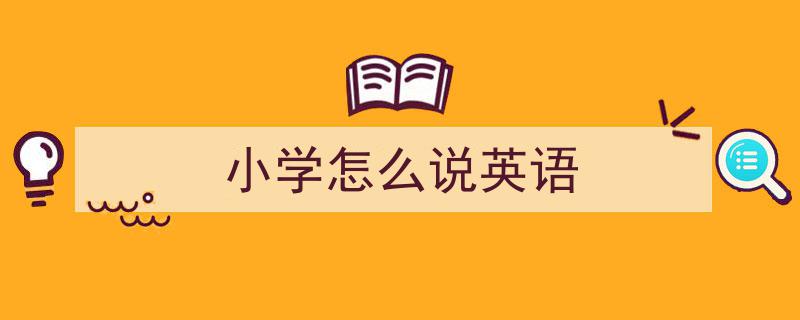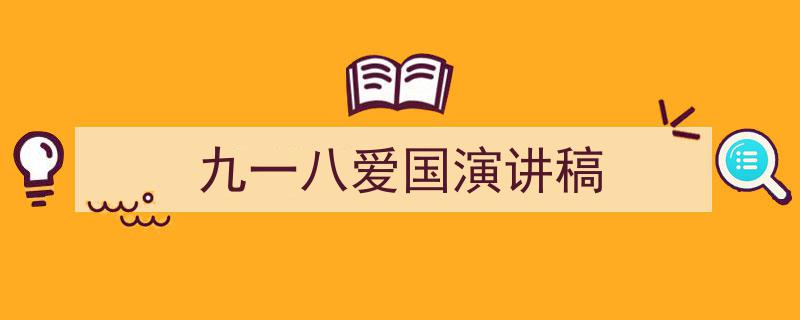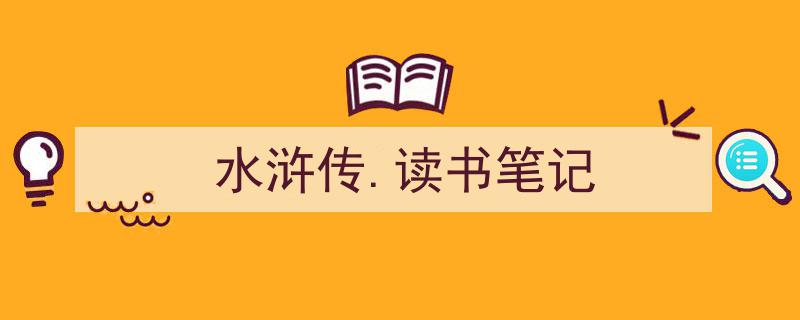欢迎来到58原创网网
格策美文教你学写《小学英语六年级选择题》小技巧(精选5篇)
更新日期:2025-08-19 11:15

写作核心提示:
这是一篇关于小学英语六年级选择题应该注意哪些事项的作文:
"小学英语六年级选择题:失分“雷区”与提分“妙招”"
随着小学英语学习的深入,六年级的英语试卷中,选择题占据了相当大的比重。它不仅考察我们对基础词汇、语法、句型等知识的掌握程度,更是我们区分高低的关键。做好六年级英语选择题,不仅需要扎实的知识功底,更需要一些技巧和细心。那么,在作答这类题目时,我们应该注意哪些事项呢?
"一、 巩固基础,不留知识盲点"
选择题是基础知识的“试金石”。要想在选择题上取得好成绩,最根本的一点就是必须掌握牢固的基础知识。这包括:
1. "词汇量":熟练掌握六年级上下册要求掌握的单词,不仅要会读、会拼写,更要理解其在具体语境中的意思。对于易混淆的单词,要特别注意区分。 2. "语法规则":系统复习并掌握时态(如一般现在时、一般过去时、一般将来时等)、名词单复数、人称代词与物主代词、介词、连词、形容词和副词的用法、基数词和序数词等核心语法知识。很多选择题的考点就集中在这些基础知识上。 3. "日常交际用语":熟悉常见的对话场景和表达方式,这对于理解情景对话类选择题至关重要。
只有基础扎实,
六年级英语上册第五模块综合语法句型转换40道试题附参考答案解析
六年级英语上册第五模块综合语法句型转换40道试题
1. She can speak English.(改为否定句)
2. I can play basketball.(用he作主语改写句子)
3. He can ride a bike.(改为一般疑问句并作肯定)
4. They can dance well.(对划线部分提问)
5. Lucy can be my pen friend.(对划线部分提问)
6. I like playing football.(改为否定句)
7. She likes reading books.(改为一般疑问句)
8. They like to watch TV.(对划线部分提问)
9. The boy likes drawing pictures.(改为否定句)
10. We like swimming in summer.(对划线部分提问)
11. I have got a new pen.(改为一般疑问句)
12. She has got some interesting books.(改为否定句)
13. They have got a pet dog.(对划线部分提问)
14. He has got a lot of friends.(改为一般疑问句并作否定)
15. My sister has got a beautiful dress.(对划线部分提问)
16. I want to be a teacher.(改为一般疑问句)
17. They want some apples.(改为否定句)
18. She wants to visit the zoo.(对划线部分提问)
19. The boy wants a toy car.(改为一般疑问句)
20. We want to go shopping.(对划线部分提问)
21. She is from the UK.(改为一般疑问句)
22. I am from China.(改为否定句)
23. They are from Australia.(对划线部分提问)
24. He is from Canada.(改为一般疑问句并作肯定)
25. My friend is from the USA.(对划线部分提问)
26. She can write emails in English.(对划线部分提问)
27. They can play the guitar.(改为否定句)
28. He can use chopsticks.(改为一般疑问句并作否定)
29. I can send greetings to my friends.(对划线部分提问)
30. She can sing English songs very well.(改为否定句)
31. I want to write to my pen friend.(对划线部分提问)
32. They want to visit the Great Wall.(改为一般疑问句)
33. He wants to buy a new book.(改为否定句)
34. She wants to make friends with us.(对划线部分提问)
35. We want to have a party.(改为一般疑问句并作肯定)
36. He has got a letter from his pen friend.(对划线部分提问)
37. I have got some photos of my family.(改为否定句)
38. They have got a postcard from their teacher.(改为一般疑问句)
39. She has got a nice present.(对划线部分提问)
40. We have got many interesting stories.(改为一般疑问句并作否定)
答案及解析
1. She can't speak English.
解析:情态动词can的否定形式是直接在其后加not,缩写为can't 。
2. He can play basketball.
解析:当把主语I换成he时,情态动词can没有人称和数的变化,后面依旧接动词原形play 。
3. Can he ride a bike? Yes, he can.
解析:含有情态动词can的句子变一般疑问句,把can提前,首字母大写;肯定用Yes, 主语+can. 这里主语是he 。
4. What can they do well?
解析:对动词短语dance well提问,用疑问词what,情态动词can提到主语前,动词短语用do代替 。
5. Who can be your pen friend?
解析:对主语Lucy提问,用疑问词who,句子语序不变,my在疑问句中改为your 。
6. I don't like playing football.
解析:like是实义动词,变否定句要借助助动词,主语是I,一般现在时,助动词用don't ,后面接动词原形like 。
7. Does she like reading books?
解析:like是实义动词,主语she是第三人称单数,变一般疑问句借助助动词does,放在句首,首字母大写,后面动词likes变回原形like 。
8. What do they like to do?
解析:对动词短语watch TV提问,用疑问词what,主语是they,一般现在时,借助助动词do,后面动词用do代替 。
9. The boy doesn't like drawing pictures.
解析:like是实义动词,主语the boy是第三人称单数,变否定句借助助动词doesn't,后面动词likes变回原形like 。
10. What do you like doing in summer?
解析:对动词短语swimming提问,用疑问词what,主语是we,一般现在时,借助助动词do,第一人称we在疑问句中改为第二人称you ,like后面接doing 。
11. Have you got a new pen?
解析:have got表示“有”,变一般疑问句把have提前,首字母大写,第一人称I改为第二人称you 。
12. She hasn't got any interesting books.
解析:have got的否定形式是在have后加not,缩写为haven't ,这里主语是she,用hasn't ,some在否定句中改为any 。
13. What have they got?
解析:对宾语a pet dog提问,用疑问词what,把have提到主语前 。
14. Has he got a lot of friends? No, he hasn't.
解析:have got变一般疑问句把have提前,主语是he,用has,首字母大写;否定用No, 主语+haven't/hasn't,这里主语是he,用hasn't 。
15. Whose beautiful dress has your sister got?
解析:对定语my提问,用疑问词whose,后面接名词短语beautiful dress,把has提到主语前,my sister改为your sister 。
16. Do you want to be a teacher?
解析:want是实义动词,主语是I,变一般疑问句借助助动词do,放在句首,首字母大写,第一人称I改为第二人称you 。
17. They don't want any apples.
解析:want是实义动词,主语是they,变否定句借助助动词don't,some在否定句中改为any 。
18. What does she want to do?
解析:对动词短语visit the zoo提问,用疑问词what,主语she是第三人称单数,借助助动词does,后面动词用do代替 。
19. Does the boy want a toy car?
解析:want是实义动词,主语the boy是第三人称单数,变一般疑问句借助助动词does,放在句首,首字母大写,后面动词wants变回原形want 。
20. What do you want to do?
解析:对动词短语go shopping提问,用疑问词what,主语是we,一般现在时,借助助动词do,第一人称we在疑问句中改为第二人称you ,后面动词用do代替 。
21. Is she from the UK?
解析:含有be动词的句子变一般疑问句,把be动词提到句首,首字母大写 。
22. I am not from China.
解析:含有be动词的句子变否定句,在be动词后加not 。
23. Where are they from?
解析:对地点Australia提问,用疑问词where,把are提到主语前 。
24. Is he from Canada? Yes, he is.
解析:含有be动词的句子变一般疑问句,把be动词提到句首,首字母大写;肯定用Yes, 主语+be. 这里be动词是is,主语是he 。
25. Where is your friend from?
解析:对地点the USA提问,用疑问词where,把is提到主语前,my friend改为your friend 。
26. What can she do in English?
解析:对动词短语write emails提问,用疑问词what,情态动词can提到主语前,动词短语用do代替 。
27. They can't play the guitar.
解析:情态动词can的否定形式是直接在其后加not,缩写为can't 。
28. Can he use chopsticks? No, he can't.
解析:含有情态动词can的句子变一般疑问句,把can提前,首字母大写;否定用No, 主语+can't. 这里主语是he 。
29. What can you do for your friends?
解析:对动词短语send greetings to my friends提问,用疑问词what,情态动词can提到主语前,第一人称I改为第二人称you ,动词短语用do代替 ,for my friends表示对象,保留 。
30. She can't sing English songs very well.
解析:情态动词can的否定形式是直接在其后加not,缩写为can't 。
31. What do you want to write to your pen friend?
解析:对动词短语write to my pen friend提问,用疑问词what,主语是I,一般现在时,借助助动词do,第一人称I改为第二人称you ,后面动词用do代替 。
32. Do they want to visit the Great Wall?
解析:want是实义动词,主语是they,变一般疑问句借助助动词do,放在句首,首字母大写 。
33. He doesn't want to buy a new book.
解析:want是实义动词,主语he是第三人称单数,变否定句借助助动词doesn't,后面动词wants变回原形want 。
34. What does she want to do with us?
解析:对动词短语make friends with us提问,用疑问词what,主语she是第三人称单数,借助助动词does,后面动词用do代替 ,with us表示对象,保留 。
35. Do you want to have a party? Yes, we do.
解析:want是实义动词,主语是we,变一般疑问句借助助动词do,放在句首,首字母大写,第一人称we改为第二人称you ;肯定用Yes, 主语+do. 这里主语变回we 。
36. What has he got from his pen friend?
解析:对宾语a letter提问,用疑问词what,把has提到主语前 。
37. I haven't got any photos of my family.
解析:have got的否定形式是在have后加not,缩写为haven't ,some在否定句中改为any 。
38. Have they got a postcard from their teacher?
解析:have got变一般疑问句把have提前,首字母大写 。
39. What has she got?
解析:对宾语a nice present提问,用疑问词what,把has提到主语前 。
40. Have you got many interesting stories? No, we haven't.
解析:have got变一般疑问句把have提前,首字母大写,第一人称we改为第二人称you ;否定用No, 主语+haven't/hasn't,这里主语变回we,用haven't 。
六年级英语上册第五模块综合阅读理解六篇专练试题附参考答案解析
六年级英语上册第五模块综合阅读理解六篇专练试题
阅读理解(一)
Hello. I’m Sally and I live in Australia. Australia is a very big country and I live in the north. I’ve got a sister. We don’t live near a school so my mother teaches us at home. We have lessons in the morning and in the afternoon we go swimming or ride our horses. I’d like to have a pen friend in China because I’m studying Chinese history.
根据短文内容,判断下列句子的正误。正确的在括号内写“T”,错误的写“F”。
( )1. Sally has got a sister.
( )2. Sally lives in the south of Australia.
( )3. Sally’s teacher is her mother.
( )4. They have lessons in the morning.
( )5. Sally wants to have a pen friend in America.
阅读理解(二)
Lucy has got four pen friends. They are Mike, Jim, Linda and Tingting. Mike lives in Sydney. He can speak English and sing English songs. He likes football, reading and swimming. Jim lives in London. He can speak French. He likes music, riding his bicycle and collecting stamps. Linda is from America. She likes dancing and painting. She has got a pet dog, Alex. Tingting is from Hong Kong. She likes drawing and playing computer games.
根据短文内容,判断下列句子正(T)误(F)。
( )1. Lucy has four pen friends.
( )2. Mike lives in China. He can speak English very well.
( )3. Jim lives in London. He can speak Chinese.
( )4. Linda comes from America. She likes dancing and painting.
( )5. Tingting is from Beijing. She likes playing computer games.
阅读理解(三)
I have some pen friends from different places. Tingting is from Hong Kong. She is 13. She can write emails and stories in English. She likes music and painting. Mike is from Australia. He is 12. He can sing English songs. He likes dancing and basketball. Jack is from New York. He is 11. He likes Chinese. He likes playing games.
根据短文内容,判断正(T)误(F)。
( )1. I mentioned(提到) three pen friends.
( )2. Tingting is from Beijing.
( )3. Tingting can’t write emails or stories in English.
( )4. Mike likes playing football.
( )5. Jack is 11.
阅读理解(四)
This is a picture. It’s a classroom. It’s big. In the picture, you can see a table, six chairs and a blackboard. You can see a boy and two girls, six books on the table. A pencil case is on a desk. Two pens and a ruler are in the pencil case. A bag is behind a chair. Two cats are on the blackboard. The boy is John. He is twelve. The girl in the hat is Lucy. She is twelve, too. The other girl is Jean. She is eleven. The two girls look the same. They are in the same class. They are good friends. Their teacher is Mr. Black. He is not here.
根据短文内容,选择正确答案。
( )1. There are ____ on the table.
A. a pencil-box B. two pens C. six books
( )2. John is ____.
A. eleven B. twelve C. thirteen
( )3. Lucy and Jean are ____.
A. in the same class B. eleven C. twins
( )4. Mr. Black is ____.
A. in the picture B. Jean and Lucy’s teacher C. Lucy’s father
( )5. Lucy and Jean are ____.
A. sisters B. friends C. brother
阅读理解(五)
Dear Daming,
How are you? I’m very happy to be your pen friend. I’m from New York and I’m thirteen years old. My name is Jack.
I am a student in Class 4, Grade 7 at Apple School. We go to school from Monday to Friday. There are four classes in the morning and three in the afternoon. My favorite subject is science because it is very interesting. I also like math. I think it’s fun. After school, I often play basketball with my classmates. It’s my favorite sport. I can also play the guitar, but I can’t play it very well.
I have a happy family. My father is a doctor. He works in a hospital. My mother is a teacher. She teaches English in a junior high school. I have a little sister. Her name is Mary. She is only five years old. She likes to watch cartoons(卡通片).
Write to me soon.
Best wishes!
Jack
根据短文内容,选择正确答案。
( )1. Where is Jack from?
A. London. B. Sydney. C. New York.
( )2. How old is Jack?
A. 11. B. 12. C. 13.
( )3. Jack is in Class ____, Grade ____.
A. 4; 7 B. 7; 4 C. 4; 8
( )4. What’s Jack’s favorite subject?
A. English. B. Science. C. Math.
( )5. Which of the following is TRUE?
A. Jack goes to school six days a week.
B. Jack can play the guitar very well.
C. Jack’s mother is an English teacher.
阅读理解(六)
In many English families, people eat four meals a day: breakfast, lunch, tea and dinner.
People have breakfast at any time from seven to nine in the morning. They eat porridge, eggs or bread. English people drink tea or coffee at breakfast.
Lunch comes at one o’clock. Afternoon tea is from four to five in the afternoon and dinner is about half past seven. First they have soup, then they have meat or fish with vegetables. After that they eat some other things, like bananas, apples or oranges. But not all English people eat like that. Some of them have their dinner in the middle of the day. Their meals are breakfast, dinner, tea and supper and all these meals are very simple.
根据短文内容,选择正确答案。
( )1. Many English people have ____ meals a day.
A. two B. three C. four
( )2. People may have ____ for their breakfast.
A. tea and eggs B. hamburgers and tea C. coffee and salad
( )3. People have lunch at ____.
A. any time B. nine C. one o’clock
( )4. People don’t have ____ for their dinner.
A. bananas or apples B. soup or meat C. porridge
( )5. Some English people have their dinner in the middle of the day, so their meals are not very ____.
A. simple B. delicious C. much
答案及解析
阅读理解(一)
1. T。根据文中“I’ve got a sister.”可知Sally有一个妹妹,所以该句正确。
2. F。从文中“Australia is a very big country and I live in the north.”可知Sally住在澳大利亚北部,不是南部,该句错误。
3. T。由“We don’t live near a school so my mother teaches us at home.”可知Sally的老师是她妈妈,该句正确。
4. T。文中提到“We have lessons in the morning”,所以他们上午有课,该句正确。
5. F。根据“I’d like to have a pen friend in China because I’m studying Chinese history.”可知Sally想在中国找笔友,不是美国,该句错误。
阅读理解(二)
1. T。根据“Lucy has got four pen friends.”可知Lucy有四个笔友,该句正确。
2. F。文中说“Mike lives in Sydney.”,悉尼在澳大利亚,不是中国,所以该句错误。
3. F。从“Jim lives in London. He can speak French.”可知Jim会说法语,不是中文,该句错误。
4. T。由“Linda is from America. She likes dancing and painting.”可知该句正确。
5. F。根据“Tingting is from Hong Kong.”可知Tingting来自香港,不是北京,该句错误。
阅读理解(三)
1. T。短文中提到了Tingting、Mike和Jack三个笔友,所以该句正确。
2. F。文中明确说“Tingting is from Hong Kong.”,不是北京,该句错误。
3. F。从“She can write emails and stories in English.”可知Tingting能用英语写邮件和故事,该句错误。
4. F。根据“He likes dancing and basketball.”可知Mike喜欢跳舞和篮球,没提到喜欢踢足球,该句错误。
5. T。由“Jack is from New York. He is 11.”可知Jack 11岁,该句正确。
阅读理解(四)
1. C。根据“six books on the table”可知桌子上有六本书,选C。
2. B。从“The boy is John. He is twelve.”可知John 12岁,选B。
3. A。由“The two girls look the same. They are in the same class.”可知Lucy和Jean在同一个班级,选A。
4. B。根据“Their teacher is Mr. Black.”可知Mr. Black是Jean和Lucy的老师,选B。
5. B。文中提到“They are good friends.”,所以Lucy和Jean是朋友,选B。
阅读理解(五)
1. C。根据“I’m from New York”可知Jack来自纽约,选C。
2. C。从“I’m thirteen years old.”可知Jack 13岁,选C。
3. A。由“I am a student in Class 4, Grade 7 at Apple School.”可知Jack在7年级4班,选A。
4. B。根据“My favorite subject is science because it is very interesting.”可知Jack最喜欢的科目是科学,选B。
5. C。A选项,文中说“We go to school from Monday to Friday.”,是一周五天上学,不是六天,A错误;B选项,由“I can also play the guitar, but I can’t play it very well.”可知Jack吉他弹得不好,B错误;C选项,根据“My mother is a teacher. She teaches English in a junior high school.”可知Jack的妈妈是英语老师,C正确 。
阅读理解(六)
1. C。根据“In many English families, people eat four meals a day: breakfast, lunch, tea and dinner.”可知许多英国人一天吃四顿饭,选C。
2. A。从“They eat porridge, eggs or bread. English people drink tea or coffee at breakfast.”可知人们早餐可能吃鸡蛋、喝茶,选A。
3. C。文中提到“Lunch comes at one o’clock.”,所以人们一点吃午饭,选C。
4. C。根据“First they have soup, then they have meat or fish with vegetables. After that they eat some other things, like bananas, apples or oranges.”可知晚餐不吃粥,选C。
5. A。根据“Some of them have their dinner in the middle of the day. Their meals are breakfast, dinner, tea and supper and all these meals are very simple.”可知他们的饭菜很简单,选A。
文章说明
本站部分资源搜集整理于互联网或者网友提供,仅供学习与交流使用,如果不小心侵犯到你的权益,请及时联系我们删除该资源。






